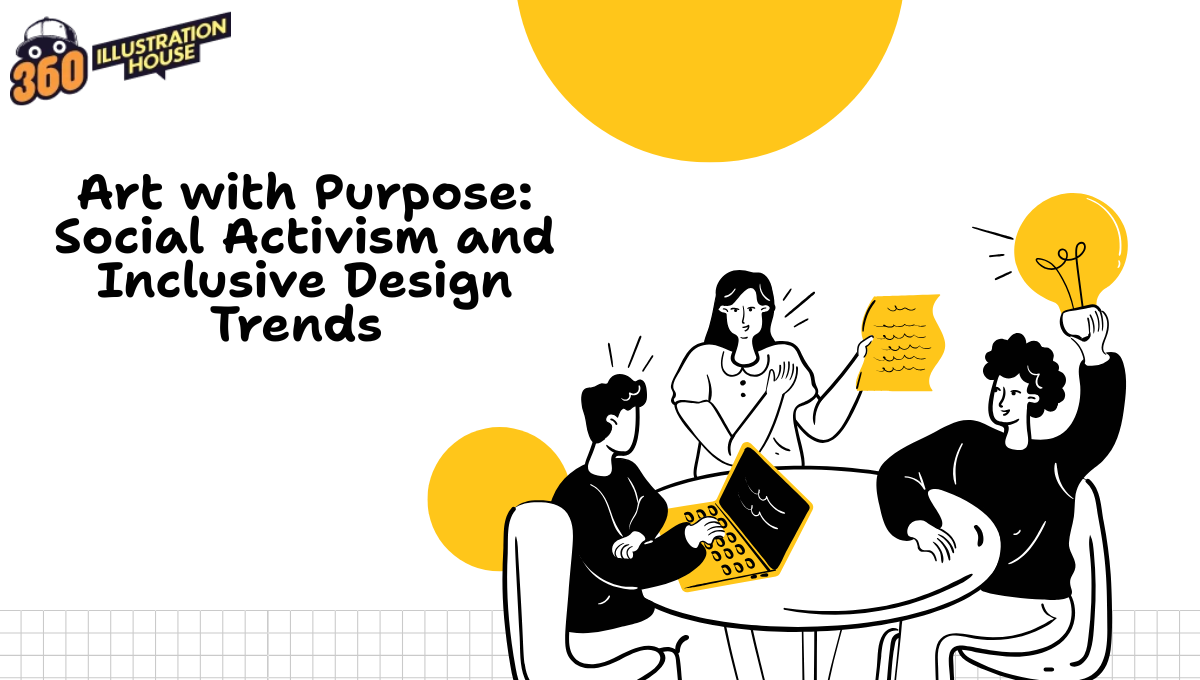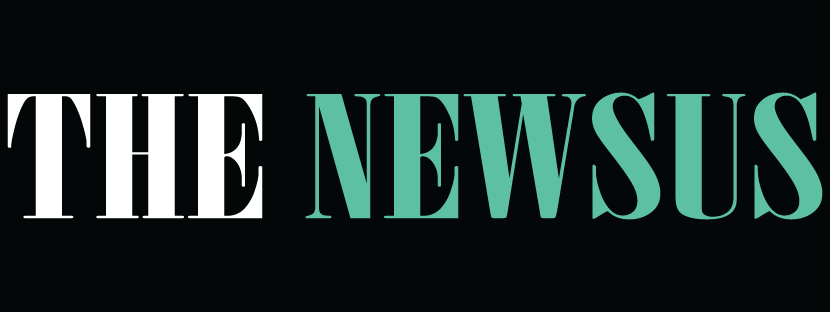Art with Purpose: Social Activism and Inclusive Design Trends
Have you ever walked past a mural and wondered, “Who is speaking through this color?” Or scrolled through social media...

Have you ever walked past a mural and wondered, “Who is speaking through this color?” Or scrolled through social media and paused at a powerful illustration confronting injustice? In today’s world, art is no longer only decoration; it’s a voice, a spark, a challenge. When art meets social activism and inclusive design, it becomes a tool to question, to heal, and to include those often left out.
In this post, we’ll explore how art and design are being used by changemakers, what “inclusive design trends” really means in this context, trends that are emerging, and inspiring real-world case studies. By the end, you’ll see how art can do more than look beautiful; it can do good.
Key Takeaways
- Art + activism can shape public opinion, boost civic engagement, and challenge systems.
- Inclusive design trends ensure creative works and spaces work for people of varied identities, abilities, and backgrounds.
- We’re seeing trends like multisensory exhibits, participatory art, digital activism, and equity-centered public art.
- You’ll leave with ideas and questions: how can your art or design practice be more purposeful and inclusive?
What Is “Art with Purpose”: Activism, Advocacy, and Beyond
When I say “art with purpose,” I refer to creative works (painting, murals, installations, digital media, design) that are intentionally connected to social causes. It’s not just making something pretty. It’s making something that speaks, that invites change, which turns attention toward inequality, injustice, identity, environment, or belonging.
Best illustration services in USA working in activism often partner with community groups, nonprofits, or grassroots movements. They bring visual language, emotional resonance, and metaphor to issues that might otherwise seem dry or abstract. A report by Brookings on art activism shows that art-activist organizations can influence civic engagement, public narratives, and policy when they embed art within organizing work. (Jr., 2023)
Art with purpose is not always loud protest signs. It can be subtle, relational, even gentle. The point is intentionality: art that seeks to open conversation, shift perceptions, and include voices that are marginalized.
What Are Inclusive Design Trends And Why It Matters for Art & Activism
Inclusive design is a design approach that starts by considering the needs of people who are usually left out or marginalized, then builds up to include everyone. Unlike “accessible design” (which often means retrofitting for disabilities), inclusive design trends try to begin with diversity of bodies, identities, and conditions in mind. (Rethinking The Future, 2022)
In art and activism, inclusive design means thinking beyond “one size fits all”;making sure that exhibitions, public art, installations, digital art, and creative spaces are usable, understandable, and meaningful for people of different abilities, ages, languages, cultures, sensory experiences, and more.
For example:
- Museums now create multisensory exhibits with top-rated illustration design services (touch, smell, sound) so people with visual or cognitive differences can still engage meaningfully. (Schleuning, 2023)
- Public spaces are being rethought so people with hidden disabilities or mobility challenges can move, gather, and rest. The Helen Hamlyn Centre at RCA has led inclusive design work in built environment contexts. (Royal College of Art, 2025)
- Digital art or web activism incorporates screen-reader compatibility, subtitles, multiple languages, and simple navigation to reach broader audiences.
- Inclusive design trends in social activism ensures the messaging and delivery of art don’t exclude people who already face barriers. If a powerful mural is placed too high to see or lacks tactile or accessible features, its impact may exclude some voices.
Current Design Trends: Where Art + Inclusive Activism Is Moving
Let’s look at design trends that are shaping how art, social activism, and inclusive design come together.
Participatory and Co-design Approaches
More projects invite the community into creation. Instead of artists dropping in with a finished idea, they co-design with local people. A good example: BEING Studio collaborated with the Inclusive Design Research Centre to co-design hybrid digital and in-person models based on artists’ needs. (Watkins, 2021)
This approach ensures the artwork reflects local needs and culture, builds ownership, and avoids top-down imposition.
Multisensory and Accessible Exhibits
Museums and galleries are expanding how art is presented. “Different by Design” is an exhibition experiment that involved multisensory engagement to reach people with different learning and sensory styles. (American Alliance of Musuems, 2023)
By appealing beyond just sight, these design trends becomes inclusive of people with low vision, sensory sensitivities, or different perceptual styles.
Digital & Virtual Activism
Art is going beyond walls and into phones, augmented reality, projection mapping, and online installations. Digital art can bypass physical barriers. For example, location-based AR (augmented reality) projects have allowed Indigenous communities to reclaim narratives tied to land and memory. One case: the Thámien Ohlone AR Tour uses AR overlays on physical space to amplify local Indigenous stories. (Lukoff, 2025)
Also, activism through top-rated digital illustration services spreads via social media. Shirien Damra’s portraits supporting Black Lives Matter or immigrant rights became viral symbols. (Damra, 2025)
Visual Storytelling with Infographics & Graphic Media
Groups like the Beehive Design Collective create large pen-and-ink posters that act as educational tools. For example, their project Mesoamérica Resiste was a decade-long collaboration with professional graphic illustration services and affected communities to visually map social and environmental impacts of development. (Wikipedia, 2025)
Graphic media is powerful to help people see connections, patterns, and stories.
Intersectional & Inclusive AI Art
A more emergent trend: art + activism + AI. Some projects are tuning AI generative tools using intersectional data so the output respects inclusive design trends. The LIVS dataset is one example: it collects community-defined preferences around visual criteria (accessibility, diversity, comfort) to guide text-to-image models. (Mushkani, 2025)
This means generative art is being aligned with values defined by diverse communities, not just by a narrow design lens.
Cultural Democracy & Community Arts
Movements like Fun Palaces (UK) aim to bring arts, science, and culture into community hands. Free events are locally organized, breaking barriers between “artist” and “audience.” (Wikipedia, 2025)
These design trends frame art not as elite but as communal, participatory, and democratic.
How to Think “Art with Purpose” in Your Own Practice
Here are guiding principles and steps to help artists, designers, or activists align intention, inclusion, and impact:
Start with Empathy & Listening
Before making, ask: Who is usually excluded here? What are their needs, desires, and constraints? Use interviews, focus groups, co-design sessions.
Co-creation & Participation
Invite local people to make decisions: what the message is, where it will be, how it will look, how people will interact with it.
Layered Accessibility
Design trends for multiple senses and access modes: visuals + audio + touch + simple language + translation + captioning.
Space & Placement Strategy
Consider where art is placed: Is it visible to disabled people? Is it reachable? Is it in public transit zones or marginalized neighborhoods?
Sustainability & Maintenance
Artwork should be durable, maintainable, and have longevity. If it’s ephemeral, plan for documentation, archiving, and reuse.
Partnerships & Power Sharing
Work with NGOs, community groups, local governments. Share control. Be transparent about funding, roles, expectations.
Measuring Impact & Reflection
Track metrics (viewers, engagement, social media shares, qualitative feedback). Reflect on what worked, what didn’t, and who felt included or excluded.
Future Directions & Predictions
Looking ahead, here’s where I think art with purpose and inclusive design trends will head:
- More AI-aligned art tools trained with community input, so generative art respects equity, diversity, and local values.
- Increased use of mixed reality (AR/VR) to overlay histories, narratives, and invisible stories onto physical spaces.
- Climate justice art: combining activism about environment with inclusive design in public spaces.
- Stronger policy integration, where city planning invites artists and designers to work at early stages of infrastructure.
- Broader training and education so artists/designers think in inclusive, justice-centered ways from day one.
Wrap Up
“Art with purpose” is more than slogans or hashtags. It’s art that listens, engages, adapts, and includes. The conjunction of activism and inclusive design trends pave the way for work that not only speaks but is heard by as many people as possible. The case studies show that when communities are partners, art is stronger, more resonant, and more lasting.
If you’re an artist, designer, or someone who cares, the question is: how will you make your work more inclusive, more rooted, more alive? Because art has the power not just to reflect the world; but to change it.
FAQ
Q1: How do you fund socially engaged art or inclusive design trends?
Funding can come from foundations, public arts grants, crowdfunding, partnerships with NGOs or municipalities, corporate social responsibility funds, or shared-cost models with community groups. But always clarify expectations, roles, and power structures up front.
Q2: How do you evaluate the “success” of art activism that is intangible (mindset change, empathy)?
Beyond counts of views, surveys, or clicks, use interviews, storytelling, sentiment analysis, follow-up workshops, community feedback, and longitudinal tracking to see whether people change attitudes, behaviors, or engage further.
Q3: Can small artists or nonprofits do this with limited resources?
Yes. Scale matters more than size. Even small murals, digital collages, participatory workshops, or street art with low cost can have power. Co-creation, reuse of materials, volunteer involvement, community skills exchange can reduce costs.
Q4: How to balance aesthetics and accessibility when it comes to design trends?
You can layer your work, have a strong visual aesthetic for those who can access it, but include alternate text, captions, simplified visuals, contrast, description stations or tactile elements for those needing more clarity.
Q5: How do you manage conflicts in community-based art projects?
Conflicts are natural when many voices are involved. Use facilitation, clear agreements, boundary-setting, iteration, and check-ins. Be humble, open to feedback, and ready to pivot.



